Seven were the plagues of Egypt and seven are the plagues that, according to the Book of Revelation, will announce the end of the world. And, of course, seven are the main plagues that could ruin your beautiful cannabis crop. Seven terrible plagues affecting both indoor and outdoor cultivations which could be prevented at best and cured at worst if you follow our tips of advice. Discover in this post which the most common cannabis plagues are.
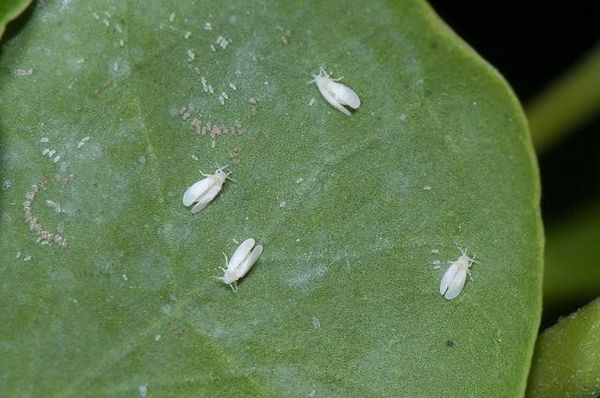
Just as ancient Egyptians were ravaged by millions of starving locusts that ruined all their wheat stocks, cannabis growers can also run into some voracious insects such as thrips, spider mites or aphids, capable of destroying the flowers that they're to fill their pantries with. The good news is that each and every of the seven most common cannabis plagues we're now going to talk about can be fought and removed if they're detected in a timely manner. However, it is important to remember that 'better be safe than sorry'.
Thrips
Let's start with a heavy hitter. This tiny insect, no bigger than 1.5 mm, is any cannabis grower's nightmare. Its hunger is inversely proportional to its size and, despite not being one of the fastest-moving plagues, it is indeed one of the most resistant and difficult to get rid of.
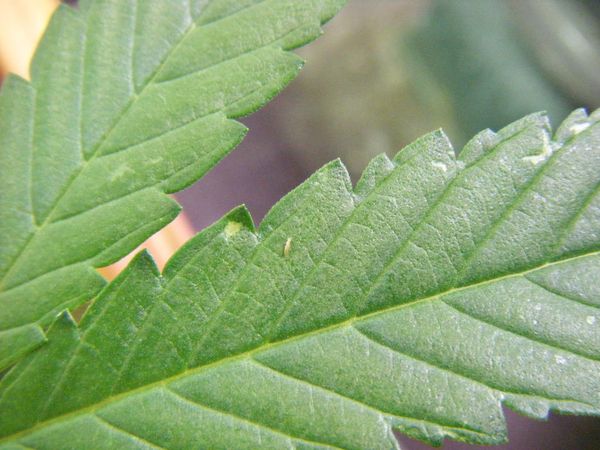
How can thrips be detected?
- Thrips are so small and hide so well that sometimes they are rather hard to detect. Don't worry, though, because they are visible to the naked eye. They tend to attack the mid and low parts of the plant, and camouflage themselves by always staying along the veins of the leaf, right where the two sides of the leaf join.
- You can also set yellow sticky traps in your crop and monitor their movements every day. No sooner do the thrips start to attack your plants, some will be glued to these strips.
- You have to look for silver or bronze spots on the leaves' surface, which come into sight when they pierce the leaves with their mouths and suck their sage. Sometimes, you may even find some black spots that are the insect's feces.
- Cracking leaves. Thrips ingest chlorophyll and, in advanced stages, leaves can dry out completely.
How can we get rid of thrips?
- Spraying: If thrips appear before your plants have started the flowering phase, you can spray all the leaves with potassium soap or Neem oil every two or three days.
- Natural predators: If the plague arrives during the flowering, spraying the flowers is not advisable. It is better to use organic remedies such as parasitic wasps or Orius.
- Organic products: During the flowering, you can help beneficial bugs by using organic products based on the fungus Verticillium.
- Bear in mind that: Thrip larvae originate in the substrate. This is very important because, otherwise, you may only worry about getting rid of the little insects on the leaves and stems and forget about the larvae that will later come to finish what their parents had started. To avoid that, you have to simultaneously use an organic insecticide mixed with irrigation water. This way, all larvae will disappear.
Prevention is always better than cure:
A good way to prevent the emergence of thrips is to spray the plant, every now and then, with Neem oil or potassium soap.
Spider mites
Spider mites are also tiny insects that love living in indoor crops and sucking out all the contents of the leaves. Despite their small dimensions, they have an incredibly big appetite, up to such an extent that it wouldn't take them long to eat up the whole plant. To give you an idea, spider mites could take over a million bites in a month and, when they are grouped, they can ruin a whole cannabis crop in just a few days. Are you already shaking with fear? Let's learn how to get rid of them.
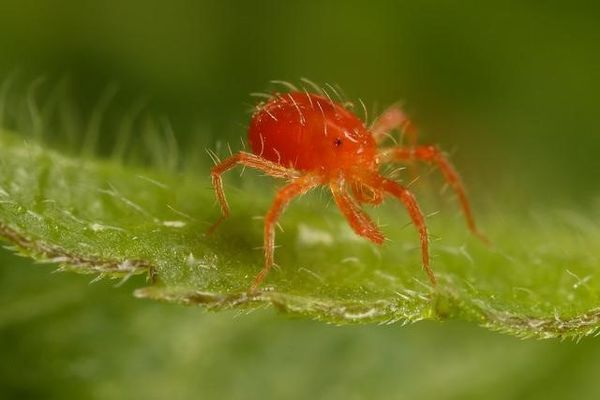
How can spider mites be detected?
- When spider mites attack, they suck out all the contents of the plant and some small yellow speckles appear on the upper part of the leaves. Be careful because some people mistake these spots with some kind of nutrient deficiency. If you manage to see them but still don't know for sure whether it is an infection or not, try spraying the back side of the leaf with a bit of water. This way, you'll be able to see tiny spider webs glued to the stems and the leaves.
- Although it is not an easy task, due to their small size, you can try to spot the spider mites. Kind of brownish, reddish and orangish, they're sometimes mistaken with spots on the leaves. Spider mites are generally found underneath cannabis leaves. They are a bit easier to spot with the help of a magnifying glass.
- Besides, sometimes spider mites spin webs on leaves and buds.
How can you get rid of spider mites?
- Keep infected plants away from the rest: keep them quarantined to prevent the plague from infecting others.
- Remove all the leaves that have 50 % of their surface infected and throw them away. During that process, avoid touching other parts of the plant.
- Lower the temperature of the growing space to 68ºF and raise the humidity levels.
- Spray cold water on the leaves because it acts as a repellant.
- You can also spray infected plants with a mix of alcohol and water (at least 40 % of water not to damage the leaves).
- If the infection isn't still very widespread, you can remove them manually with the help of a sponge. Throw them away once finished, of course.
- Neem oil, potassium soap or pyrethrum oil are good organic allies to fight this pest, provided the plant is going through the vegetative stage.
Prevention is always better than cure:
- Keep the grow space clean and well aerated.
- Keep the temperature lower than 80ºF and the humidity levels between 55 % and 60 %.
- Spray Neem oil on the plants from time to time while they're growing, never when flowering.
- Introduce predatory mites.
Caterpillars & Inchworms
Caterpillars are other ravenous enemies of cannabis growers. Most commonly found outdoors, they can also hit indoor crops. They're very fast and greedy. Butterflies lay eggs on the plant which hatch into caterpillars that don't stop eating until they are big enough to turn into a chrysalis. They come in all kinds of colors. However, the ones that attack cannabis plants are generally green.
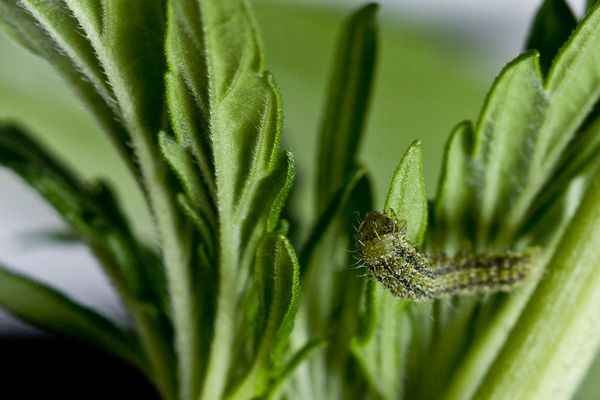
How can you detect the attack of caterpillars?
- The first sign is that very small, yellow-colored, almost transparent eggs appear on the leafs, particularly on the back part.
- Other telltale signs are the tiny black droppings that also appear on the leaves. And on top of that, these are sources of infection that could cause fungi like botrytis to appear.
- Caterpillar bites: That's right, caterpillars feed on leafs and leave teeth marks on them.
- Dark patches on the buds: Caterpillars are capable of penetrating the buds, eating them and leaving them rotten.
How can you get rid of a caterpillar plague?
- By hand: with patience and some gloves on, you can remove them one by one.
- Predatory species: Trichogramma wasps and Podisus masculiventris buds can help you get rid of them.
- Spraying: A good way to fight them is to spray a homemade infusion of pepper and garlic on the leaves.
- Organic insecticide: you can always alternate some Bacillus Thuringiensis sprayings with manual removing sessions. Using this during the last 15 days before harvest is not advisable.
Aphids
Aphids make up one of those damn plagues that could attack your cannabis plants. This one in particular is very dangerous because they reproduce very quickly and love jumping from plant to plant. Spring is their peak and, like spider mites, they feed on the contents of the leaves.
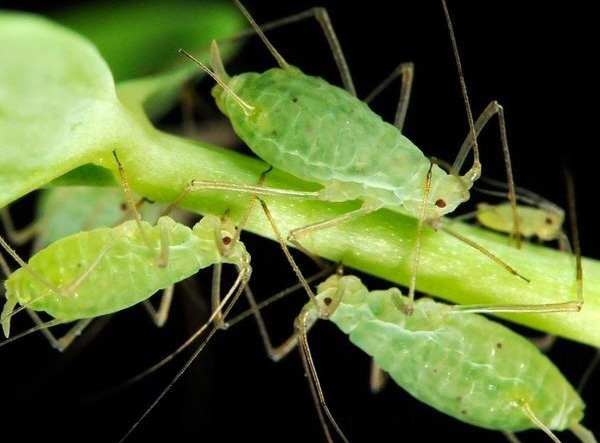
How can you detect the attack of aphids?
- The first and most obvious sign to confirm the attack of aphids is the aphids themselves. They live in groups, on the back side of the leaves and on the stems.
- Peaked-looking, yellowish and dry leaves.
- Molasses: As the infection spreads, a substance similar to molasses appears, which is a sticky substance aphids secrete from the anus. If that moment comes, be careful, since it may bring different fungi like sooty mold.
- Ants: Ants arrive as soon as molasses does. They've got a symbiotic relationship with aphids: they feed on their molasses and in return, they protect aphids from other predators. So keep an eye out for ants marching towards your plants.
How can you get rid of aphids?
- Manually: crushing them is easy because they barely move.
- Natural predators: by introducing aphid-eating lacewing flies, ladybugs (outdoors) or parasitic wasps.
- Pyrethrum: spraying pyrethrum twice or three times with 5-10-day stops will also help.
Prevention is always better than cure:
Keep the growing area clean, remove all rotten leaves and change clothes before getting in. Avoid overusing fertilizers because this could cause them to appear.
Whiteflies
It is true that whiteflies aren't as lethal as other insects such as thrips or spider mites. However, you shouldn't underestimate them. Only around 1 mm long, they are like little white moths that steal all the essential nutrients from cannabis plants.
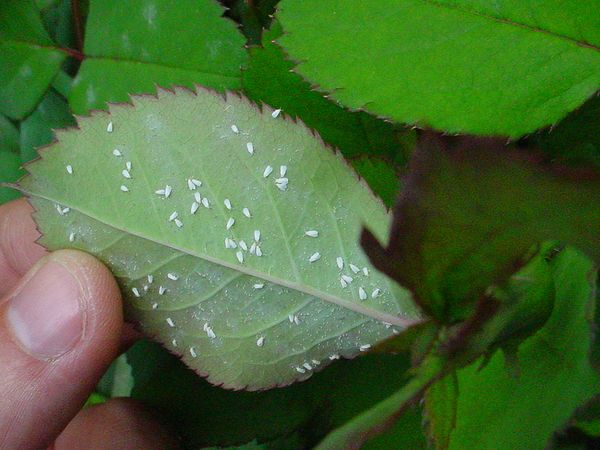
How can whitefly attacks be detected?
- The flies: If you shake the leaf and little flies come flying out, it means they're there...
- Yellowish, dry and lifeless leaves: as a consequence of whiteflies' sucking out their contents, leaves become weaker and weaker.
- Yellow, almost transparent, dots appear on the top side of the leaves.
- Off-white powder underneath the leaves
- Molasses: As with aphids, whiteflies also secrete a substance similar to molasses.
How can you get rid of whitefly plagues?
- Grow basil; it is a great repellant.
- Introduce natural predators such as Encarsia Formosa wasps into your crops.
- Spray Neem oil or potassium soap provided your plants haven't started the flowering phase yet.
- Set yellow sticky traps. Flies, attracted by the color, get close and end up glued to them.
Cochineal
Cochineal insects are difficult to detect and very resistant to insecticides. They feed on the essential nutrients of plants and leave a sticky substance as they move, which is the telltale sign something is wrong with your crop. Apart from that, watch out for their excrements since they contain a corrosive fungus that destroys all plant matter. The good news is that, once detected, they are easily removed.
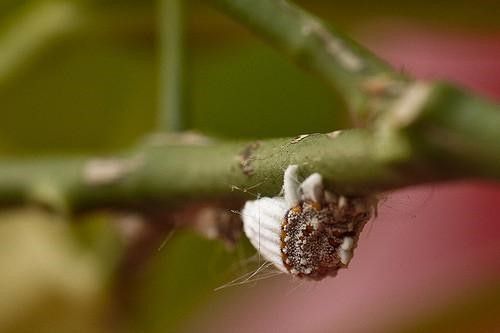
How can cochineal be detected?
- Molasses: The sticky trace cochineal insects leave is easy to see.
- Ants: Just like with aphids, cochineal insects also have a symbiotic relationship with ants, which feed on their molasses. If ants appear in your crop, something wrong is going on.
- Leafs start losing color: As a consequence of cochineal insects' sucking up their contents, leaves turn yellowish, dry and lifeless.
- Check the stem: They generally start attacking the stem's base and then they move up. So check the base of the stem.
How can you get rid of cochineal?
- Spray a 50 % alcohol/50 % water mix onto the infected parts of the plant.
- Use natural predators such as ladybugs.
- Remove them one by one manually and spray the water/alcohol mix from time to time.
Prevention is always better than cure:
If you're growing outdoors, doing so away from other plants such as rosebushes and geraniums is paramount since they tend to attract cochineal insects. Avoid extremely high temperatures and keep the grow space clean and well aerated. You can also combat them with ladybugs.
Nematodes
Although far less famous than other cannabis plagues, nematodes, also known as roundworms, are closely related to marijuana as well. Over 25,000 types have been described, 50 % of which are parasitic. There are many beneficial, though. The 'bad' ones attack cannabis roots, slowing down their growth and sometimes even destroying them.
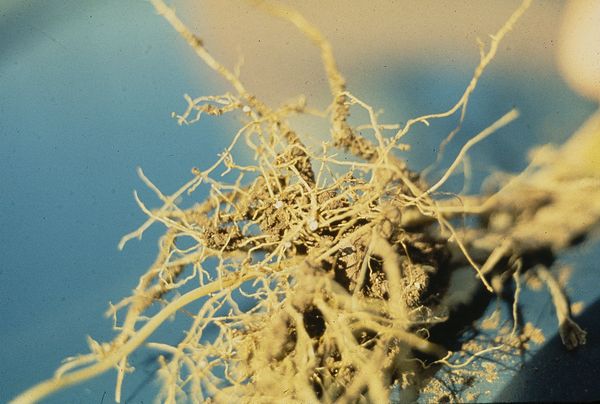
How can a plague of nematodes be detected?
- Plants start to grow more slowly than usual.
- Leafs suffer from chlorosis.
- Plants become weaker and gradually dry up.
- The stems twist and become deformed.
How can you get rid of a plague of nematodes?
- Change the substrate by a new and sterilized one.
- Use products such as Laotta or Skunk Neem.
- Mix Neem oil with the substrate.
- Trichonema Prot-L is an organic product that not only helps plants to germinate but it also revitalizes the soil.
Prevention is always better than cure:
Nematodes usually live in small water puddles. So make sure no puddles are formed in the soil.





this is motivation to grow haha